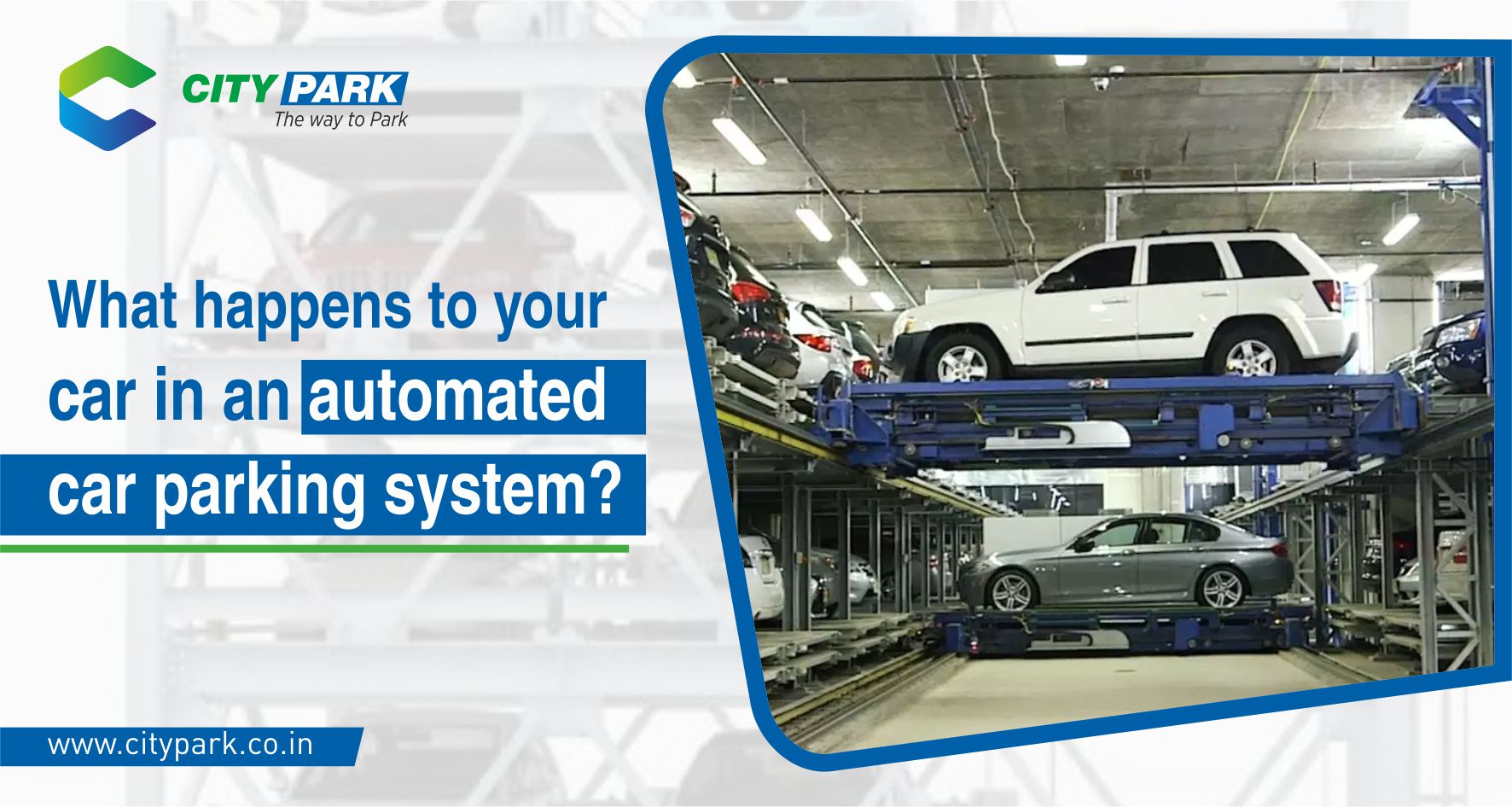Phone : +91 022 690 20000 - 100 (100 lines)
Mail : city@citylift.co.in
What happens to your car in an automated car parking system

What happens to your car in an automated car parking system?
Introduction
Squeezing the car into a small space in a city with insufficient parking space is always a harrowing experience for drivers. Apart from being aggravating, it is also likely to cause traffic congestion and a bad parking experience for those in line behind you. Our streets aren't getting any wider, despite the fact that new cars are flooding the roads. Fortunately, technology has a solution. An automated car parking system stacks cars on top of one another and has several parking levels. As a result, it maximizes space usage, reduces costs, and provides a greener alternative to conventional parking schemes.
So without any further delay let’s get started and see how this automated car parking system performs internally.
Automated car parking system
Automated car parking systems come in a variety of shapes and sizes. Automated car parking systems are known as horizontal platforms or vertical lifts based on how they transport the vehicle to the parking spot. Although the parking procedure is identical, the car's movement as it approaches the parking spot is different – lateral or vertical. Sensors, cameras, and electro-mechanical components are used in automated car parking systems to drive the car and park it in an empty slot. The procedure is straightforward and requires no effort on the part of the driver. Such garages may be constructed on a vacant lot or even within buildings. It is made of a metal skeleton that can be covered with something to blend into the scenery of a city.
How does it work?
Any of the three elements of an automated car parking system can be used: shuttle, conveyor, or crane.
Shuttle: It's a pallet-free, multi-level, multi-depth solution that's perfect for systems that need more parking space. The machine is turned off and transports the car from the entry point to the parking spot on its own.
Conveyor: Pallet-based single, multi-level, or multi-path portion, best for medium to large parking capacity projects. Using an ordered matrix array, the conveyor-based solution transports the vehicle-on-pallet from the entry point to the destination. Converting existing parking facilities into self-contained parking garages is the most cost-effective alternative. Converting existing parking structures into separate parking facilities is the most cost-effective option.
Crane: It's a multi-level, multi-depth solution that's ideal for parking structures with limited capacity. The crane-based solution transports the vehicle in a straight line from the entry point to the parking spot. The car is pushed into a multi-story room in both vertical and horizontal structures. The driver exits the vehicle after positioning it on a ramp. Multiple sensors are mounted on the ramp to determine the car's shape and height. There is usually a screen that shows whether the car is properly positioned. The machine checks the vehicle again after the driver exits to ensure that the doors are properly closed. The car is then rolled onto a moving platform after being lifted into the parking garage. A quick-exchange framework is installed on this platform. The device decides where to park based on parking availability. It is parked in a location using electro-mechanical elements, either vertically or horizontally.
The pallet is emptied for the next vehicle when a car slides into a new location. This mechanism is reversed when the car is fetched to leave. Drivers obtain a card or key containing a code that marks the vehicle's location in order to identify the legitimate owner of the vehicle. After scanning this, the device locates the vehicle and returns it to the driver.
Parking in the Future
Multi-story parking spaces will soon be replaced by automated car parking systems. They take up less room because they don't have access to ramps and cars are parked far closer together than in traditional parking lots. Furthermore, since the car does not need a working engine to travel through the lot, automated garages help reduce CO2 emissions and fuel consumption. Depending on the amount of space available in an area, they may be constructed above ground or underground. Countries like Japan and the United States have already begun to construct such systems. Automated car parking systems are, without a doubt, the way of the future.
Benefits
Automated car parking systems are useful because they help save space by allowing more cars to fit in a smaller space. This is particularly true in the case of fully automated car parking systems, which eliminate the need for attendants to park vehicles. Since no one will have to get out of their vehicles, each vehicle can be parked closer to one another.
Construction costs and time are limited: Automated car parking systems restrict the amount of time, money, and resources that construction firms will normally spend to build a fully functional parking garage. Construction teams must account for stairwells, pedestrian walkways, escape paths, elevators, and even the height of the ceilings in regular parking garages to accommodate the types of people and vehicles that may use the garage facility. Since the only people who come and go from those areas are parking attendants, APSs do not need stairwells, elevators, or large parking decks.
Conclusions
In this blog, we discussed the internal working of the automated car parking system. If you are also working on a real estate project and want to install an automated car parking system in it, then you must read this blog at least once. And If you found the content of this blog helpful then share this with others so that they also get the value. If you are looking for an automated car parking system company that can provide you the latest and cost-effective automated car parking solution then you can connect with Citypark.
Citypark has more than 10 yrs. of working experience and amazing service and can provide you the best-automated car parking system and full support.